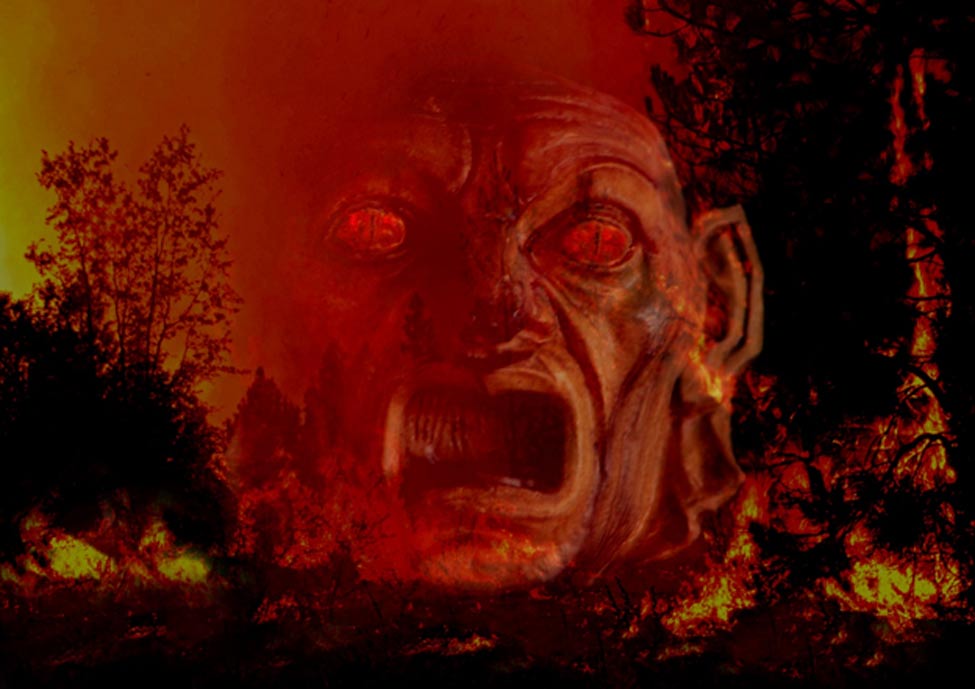
The Origins of Evil: The Story of Human Spirituality and Belief Systems
Evil is as old as humanity. We live in a world of duality. Darkness and light. Good and evil. Up and down. In and out. Heaven and Hell. But which came first—or did these dual concepts evolve side by side as our primitive understanding of the world around us became more sophisticated over time?
The concept of evil has changed over time to mirror our own evolving behavior as human beings.
The History of the Word
Looking first at the etymology of the word “evil,” we find that it has its roots in the English (Middle English evel, evil; Old English yfel), German (Old High German ubil, ubel) and Dutch (evel) languages. The first known use of the word “evil” dates back to the 12th century, and is used as an adjective (evil life), adverb (gone evil), noun (evilness) and idiom (thy evil one, Satan).
In Old English and older Germanic languages other than Scandinavian, the word is an adjective expressing disapproval, dislike or disparagement. Evil was the word the Anglo-Saxons used for bad, cruel, unskillful, defective (adj.), or harm (n.), crime, misfortune, disease (n.). In Middle English, evil was focused more on moral badness, with goodness and purity as its opposite.
The general meaning of the word is harmful, morally wrong, immoral, wicked, bad, sinful, mischievous, and even misfortune (evil has befallen the poor soul!). Whether being used as a noun, adjective or adverb, the word implies something to be feared, something awful, disastrous, nasty, primal and even murderous. It’s just not a good word with any connotations of the positive.
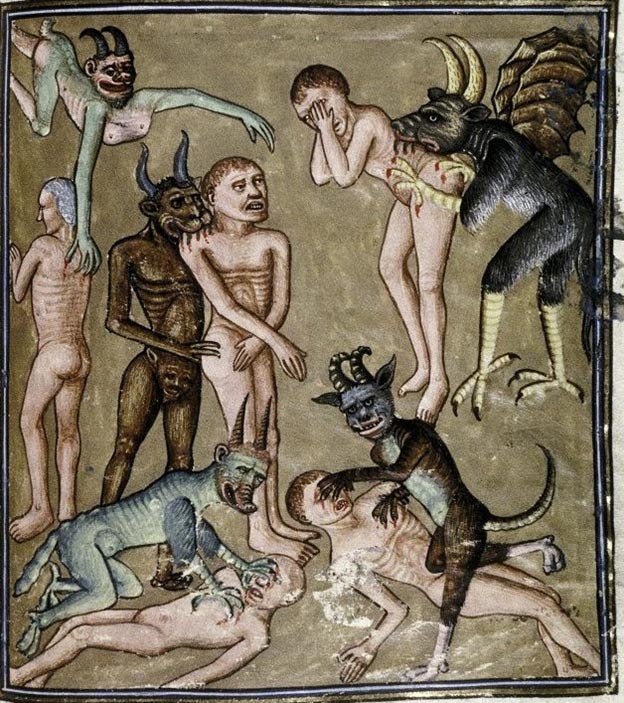
Evil demons attacking and feasting on humans, circa 1450-1470. (Public Domain)
Most people use the term evil to describe another person’s behaviors or actions, but the word has also become a symbol of a dark power that is the antithesis to goodness and light. If angels are holy, demons are evil. It is this association that most gives rise to the evolution of the devil itself, and the minions of death, hell and the underworld; all of which represent the dual nature of humans themselves, as well as the possibility of negative forces, energies and entities. Where evil might have once simply described a terrible person, it soon became personified with supernatural entities that represented every opposite of good possible.
Interestingly, “evil” backwards is “live,” implying perhaps that true evil is the opposite not of goodness, but of life itself. Death is not necessarily evil, but our obsession with the darkness of the unknown may have morphed its way into our psyche as the “anti-live,” or evil. Switch the letters around, and you have “vile.” Add a “D” and you have “devil.”
Words have incredible power to convey not just simple explanations or descriptions, but deeper meanings that often are symbolic in nature and appeal to our subconscious as archetypal.
The Dawn of Evil
When did evil begin? Most likely the same time as the dawn of humanity. There is no proof that true evil existed before human beings were around to interpret darkness and bad behavior as such; only light and dark forces and energies that gave rise to both creation and destruction in our natural world.
The first humans needed a way to understand what was happening around them, which at the time, without scientific knowledge, must have appeared very frightening. The belief that everything had a “spirit,” known as “animism,” began our quest to gain some kind of control over our environment.
The Supernatural World of Animism
Animism is the belief that everything that isn’t human still possesses a spirit or essence, including inanimate objects such as rocks, thunder and waterfalls. This idea that everything was supernatural, or connected to a spiritual whole, is a fundamental concept to indigenous peoples still today, but is considered the earliest inklings of religious belief in the history of humanity. To our earliest ancestors, everything possessed its own spirit, or soul, and that no separation existed between the realm of the physical and that of the spiritual. That concept came later when duality was introduced into our mental awareness. To the animist, all was interconnected and everything was alive.
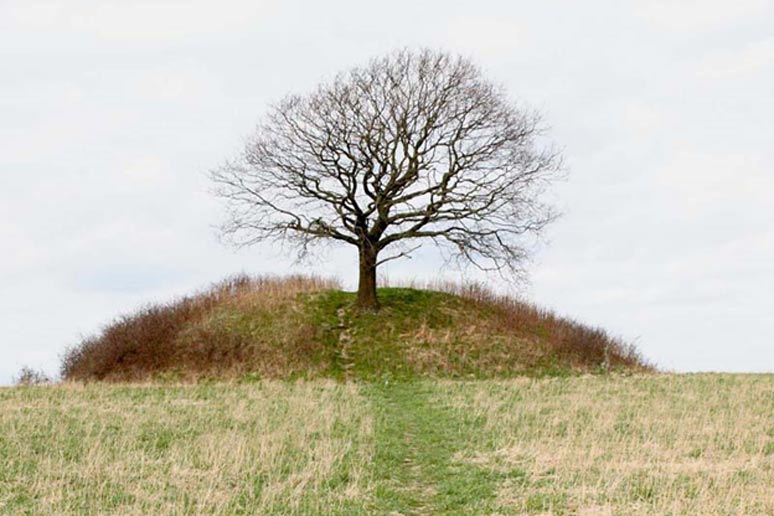
A tree grows atop Mysselhøj, a Nordic Bronze Age burial mound in Roskilde, Denmark. (CC BY-SA 3.0)
Animists did not call themselves “animists.” That term was later credited to 19th century anthropologist Sir Edward Burnett Tylor, who called animism a “general doctrine of souls and other spiritual beings” in his extensively researched, “Primitive Culture” (1871). Tylor saw this earliest form of what we now call religion as a basic concept of nature as something alive and purposeful, akin to fetishism, totemism and even later shamanism, which imbued all of nature with an essence and connectedness. Although crude and scientifically illogical, Tylor believed it was inspired in part by dreams and visions and not scientific observations of natural phenomenon. His extensive research would lead to the creation of the field of anthropology as a new science as a part of our understanding of primitive society.
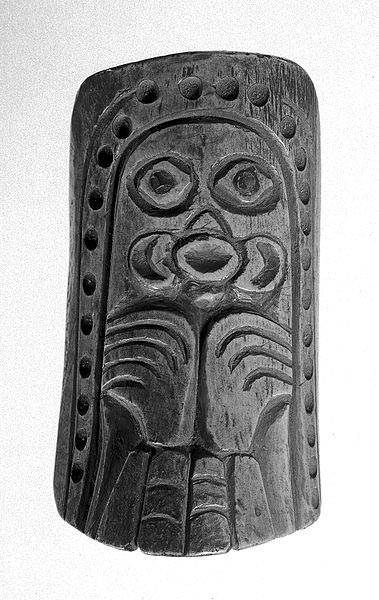
Shaman's totem charm of bone carved in British Columbia, Canada. Designs representing the octopus and bird. Abalone inlays in eyes. Hole pierced at top for pendant. (Wellcome, CC BY 4.0)
The word “animism” itself came from a German scientist named Georg Ernst Stahl. In 1708, Stahl used the term “animismus” to describe the theory that the vital principle of everything in nature was the soul, and all phenomena, normal and abnormal, could be traced to the soul/spiritual, something today’s followers of homeopathic medicine and wholeness-oriented health would understand, yet modern science stands against strongly.
(An intriguing side note: the argument over animism would even invade the world of child psychology, with warring camps debating over whether or not children are born with an inherent animistic worldview or that children are not born with it, but accultured to it later as they became educated.)
Shamans might argue with American cultural anthropologist Margaret Mead that education has not led to a better understanding of our world and our place in it, but a more shallow one, and those shamans would be backed up by the research of quantum and theoretical physicists who suggest there is, indeed, a web of connectivity beneath the surface appearances of reality.
Order out of Chaos
Other theories on the origin of religious belief during the 19th century suggested that early humans gave a symbolic or mythological explanation of natural phenomena, called “naturalism,” or point to “hedonism” as the precursor to what would become monotheism. These theories have been debated and often given limited credibility, although mythology does lend credence, as we shall explore later, to a symbolic origin for religious concepts embedded in stories science deems outlandish, yet contain hidden truths.
If everything had a soul, or spiritual essence, how did some go rogue and become interpreted as bad, evil and dangerous? Observation told early humans that some things were creative and generative, and some were utterly destructive and terrifying. Assigning a spirit to each, say to thunder and to rain, to lightning and to earthquakes, to animals and to plants, gave humans a way of categorizing and interpreting objects as either beneficial or something to be avoided, something detrimental to their survival.
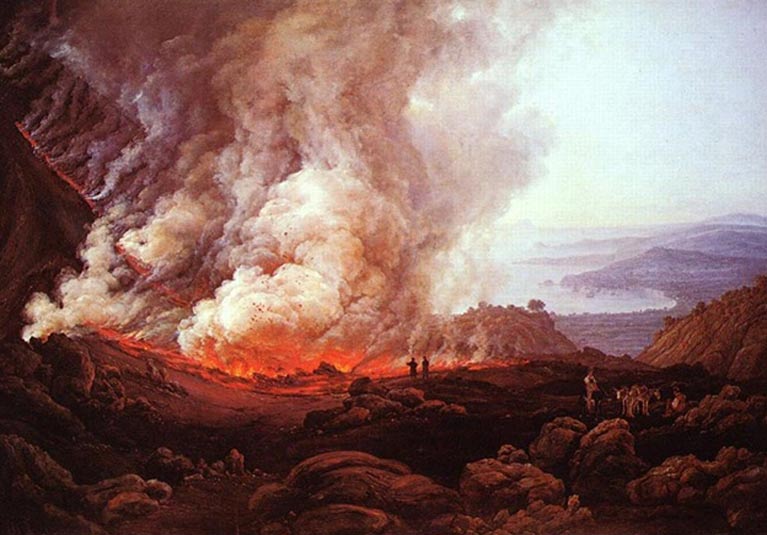
The dramatic eruption of a volcano – a terrifying and astounding natural phenomenon. Vesuvius erupting, painting by Johan Christian Dahl. (Public Domain)
Watching the moon at night gave a sense of awe and wonder, much different than the fear inspired by a lightning strike that caused a fire in dry brush. Thus the lightning spirit would be considered more negative, possibly even one to be feared. The moon, on the other hand, would be considered to have a spirit that evoked awe, and later one that was associated with the menses of women, once a pattern was discerned.
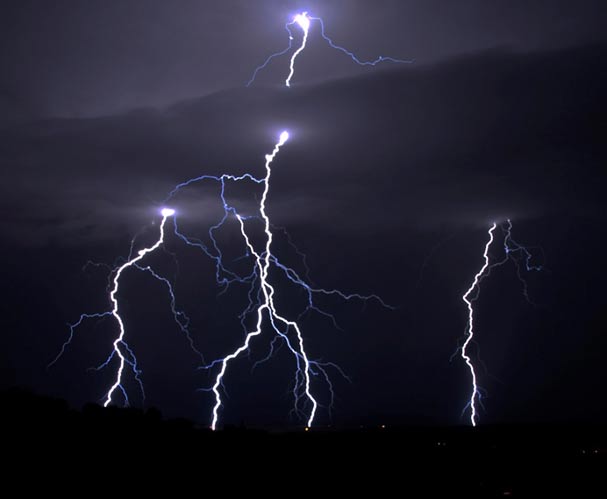
The frightening natural power of lightning. (CC BY 2.0)
Good spirits and bad spirits embodied the natural world, creating some order out of chaos and some wisdom out of fear. We began, in a sense, to take sides, putting some phenomena in the positive category, and others in the negative, based entirely upon how each influenced our ability to survive. Thus arose the need to give spirits themselves a good or bad name, dividing the unified world into dual camps.
The Principle of Unity
This duality, though, coupled with our own evolution and increased knowledge of science and nature, actually led to a demand for a new belief that could, once again, unify everything. If there were indeed good and bad spirits, and good and bad events, there must be an overseer behind the curtain, giving birth to the “one God” concept of monotheism that led to the Abrahamic “western” traditions.
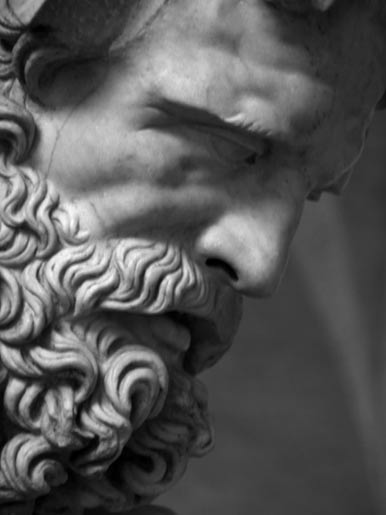
In Greek pantheism, gods were notorious for loving and punishing humanity, in acts of ‘good’ and ‘evil’. (CC BY-SA 2.0)
In his book, “The History of the Devil and the Idea of Evil,” scholar Dr. Paul Carus writes that although animism was the first stage in the development of religious thought, the principle of unity would dominate its later development. “Man tries to unify his conceptions in a consistent and harmonious monism. Accordingly, while the belief in good spirits tended towards the formation of the doctrine of Monotheism, the belief in evil spirits led naturally to the acceptance of a single supreme evil deity, conceived as embodying all that is bad, destructive and immoral.” This mental evolution towards monotheism, he suggests, along with “monodiabolism,” constitute a Dualism that is still held today as the most widely accepted world conception and the traditions of Judaism, Christianity, Islam and Zoroastrianism.
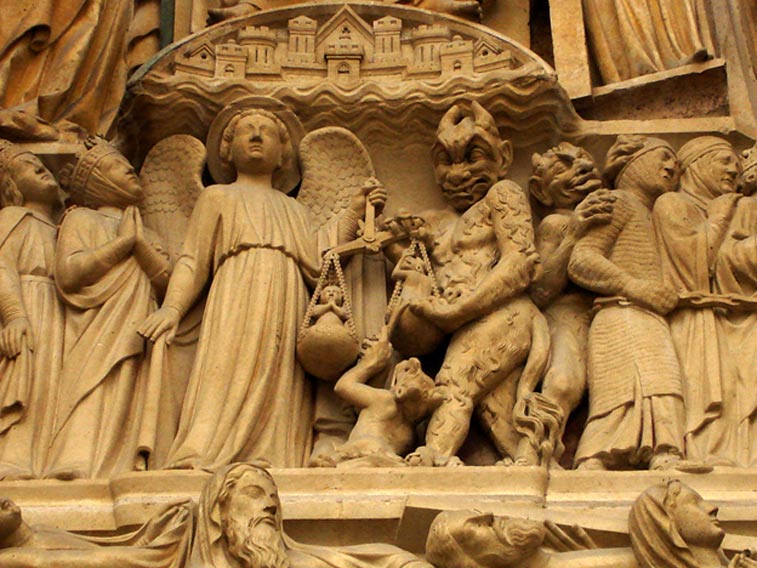
The perceived balance between the duality of good and evil. (CC BY-SA 2.0)
Other regions of the world adopted belief systems that organized lower deities under main or superior deities, such as the panentheism of Sikhs and polytheism, the prevailing religions of ancient Rome and Greece, the Germanic and Norse forms of paganism, and Mesoamerican cultures such as the Maya, Inca and Aztec. Eastern traditions such as Buddhism, Jainism and Hinduism adopted a monistic worldview. Gnostics preferred Dualism.
Some of the more widespread terminology for belief systems are briefly described for a better understanding (note that a belief in many deities also included those that represented evil, such as demons):
Atheism - The view that there is no God. From the Greek atheos, “without God.” Atheists believe there is no empirical evidence for God or deities, including the Devil.
Agnosticism – The belief that there may or may not be something akin to God, but knowledge of it or its existence is unknowable.
Animism – non-human entities all possess a soul or spiritual essence, with no separation between the physical and spiritual. This includes everything from animals to plants to inanimate objects and things such as storms, rivers, mountains and clouds.
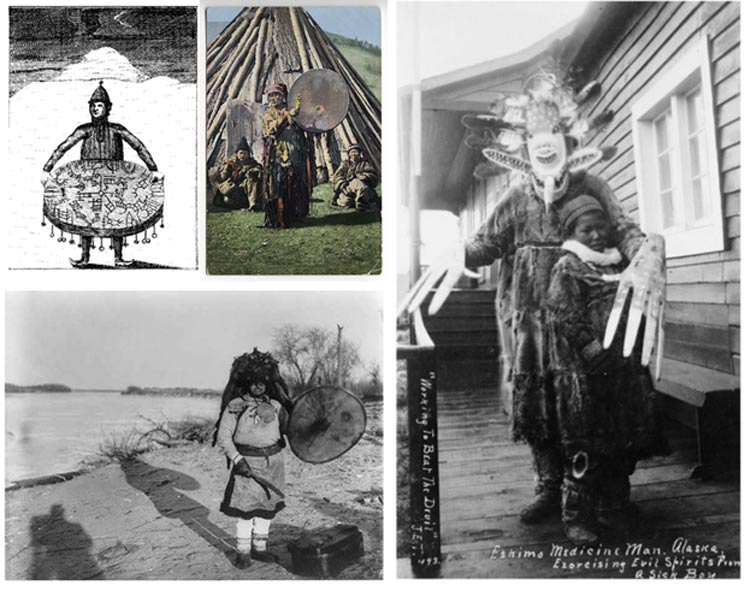
A tableau presenting figures of various cultures filling in mediator-like roles between humanity and the natural and supernatural world, interacting with good and bad spirits for healing and knowledge, often called "shaman". (Public Domain)
Dualism – The belief that the world consists of two basic, opposed, and irreducible principles that account for all that exists. Two supreme opposed powers or gods, or sets of divine or demonic beings, that caused the world to exist. There are monotheistic, monistic, and polytheistic religions with dualistic aspects.
Fetishism – The belief that objects have inherent power over humans, and each object, such as masks, figurines, stone carvings, etc. represents a different type of power.
Gnosticism – A pre-Christian and early Christian system of belief that matter is considered evil and truth and salvation/emancipation comes only through gnosis, or esoteric knowledge.
Monism – A view that considers only one kind of ultimate source or substance, and that reality is one unitary organic whole with no independent part, God is all and all is God. Most eastern traditions have a monistic worldview.
Monotheism - The belief that there is one God. From the Greek monos "only", and theos "god". Monotheism is the opposite of polytheism, the belief in more than one God, and atheism, the belief that there is no God. Other worldviews such as deism (the belief that God created but does not intervene in the world), and pantheism (the belief that God is in all and that all is God), do maintain that there is one God. Monotheism is the belief foundation of the Abrahamic Western traditions of Judaism, Christianity, Islam, and of Zoroastrianism.
Paganism – A term traditionally given to any religion NOT of the Abrahamic belief system, often used in a derogatory manner, such as “heathen,” but mostly associated with pre-Christian cults, goddess worship and nature worship. Paganism can be associated with a worldview that is pantheistic, polytheistic, or animistic.
Panentheism – God and the world are different, but the world is “in” God; God is transcendent, and intimately connected to the world, yet greater than the world. Events and changes in the universe affect and change God, who is a temporal being. As the universe grows, God learns as he increases in knowledge and being.
Pantheism - From Greek words, pan (all) and theism (God) meaning "all is God" or "God is all." It is the belief that all things contain divinity and that God is the sum of all things. Pantheism is the view that God is everything and everyone - and consequently that everyone and everything is God.
Polytheism - The worship of or belief in multiple deities usually assembled into a pantheon of gods and goddesses, each with their own religions and rituals. The deities often represent forces of nature or emanations of a more absolute, transcendent principle that manifests in nature via the various deities.
Shamanism – A belief system or practice that allows the practitioner to access alternate realities or worlds via changes in consciousness to interact with good and bad spirits for healing and knowledge. Considered a technique of “religious ecstasy” by scholar Mircea Eliade in “Shamanism, Archaic Techniques of Ecstasy.” Most associated with indigenous and tribal worldviews.
Totemism - Each human, or each clan or tribe, is thought to have a spiritual connection or a kinship with another physical being, such as an animal or plant, often called a "spirit-being" or "totem." The totem interacts with a given kin group or an individual and to serve as their emblem or symbol. Similar to the shamanic “spirit animal” or “power animal” concept.
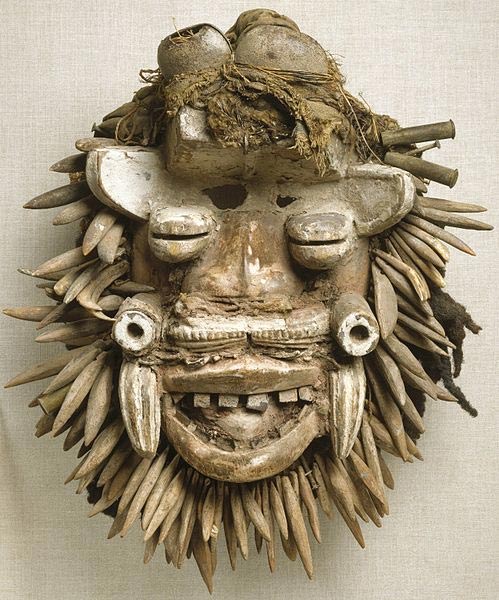
This African face mask, which appears to represent a bush spirit, contains animal and human composits. This mask combines many diverse materials to create an image of power. Multiple eyes, warthog tusks, large teeth, and other power symbols such as rifle casings and a beard of authentic and wooden leopard's teeth form a fierce countenance that frightens away negative forces. (Brooklyn Museum, CC BY 3.0)
The Evolution of Evil
As our primitive ancestors grouped things into the good and bad columns, and gave each names and symbols, creating what would one day be the cosmogenesis stories and mythologies of world cultures we study in school, they also sought to unify those columns back into a singular whole. Yet, in doing so, realized that each column might have its own unifier, or main deity.
As the concept of religion developed, creating offshoot belief systems all over the world, so, too, did the concept of evil. What we call evil today has most of its roots in the sins of the Old and New Testament, Torah and the Koran simply because these are the predominant religious traditions of our time. The laws and judgments of religion mark the line between heaven and hell, angels and demons, God and Satan. But even those who shun religious beliefs understand that humans possess a duality that cannot be denied, and a non-religious person is just as capable of evil as anyone else. The concept of a deity or deities categorizing our behavior as positive and negative need not apply when it comes to immoral, brutal, cruel, harmful actions.
If anything, the most obvious changes to our understanding of evil from the dawn of our existence occurred as our scientific knowledge led us to understand that a hurricane or volcanic eruption was not necessarily “bad” in and of itself, but in how we perceived it. Nature as we now understand it, does what nature does and it’s neutral until we give it a label or make a judgment. We now know better than to ascribe a natural disaster to a deity angry with us for our vile behaviors and wickedness.
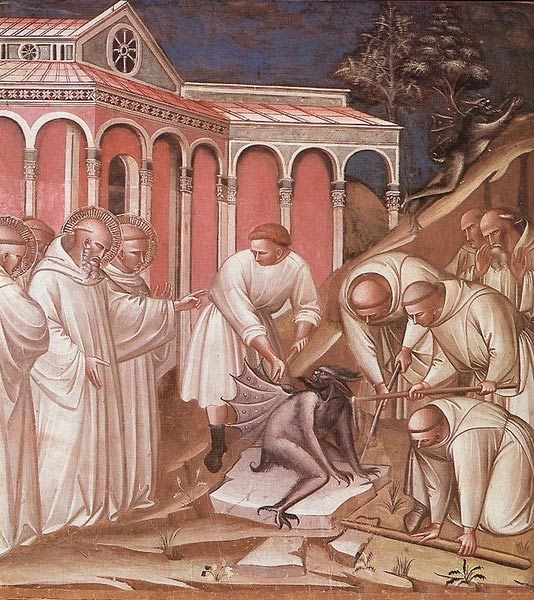
Evil was traditionally considered to be an external force, incarnated by nature or the supernatural. Exorcism of St Benedict by Spinello Aretino, 1387. (Public Domain)
As our ancestors moved away from blaming Gods and Goddesses for the horrors of the natural world, we moved more towards blaming ourselves for the horrors of man. Both God and the Devil, as the highest and lowest representations of duality, became not only a presence “out there,” but within the souls of humanity.
Featured image: The ‘evil’ demons of the natural world confounded the ancestors. (CC BY 2.0)
References
Carus, Dr. Paul. “The History of the Devil and the Idea of Evil.” Gramercy Books, 1996
Pagels, Elaine. “The Origin of Satan.” Vintage Books, 1996
Tylor, Sir Edward Burnett. “Primitive Culture.” Cambridge Books, 2010